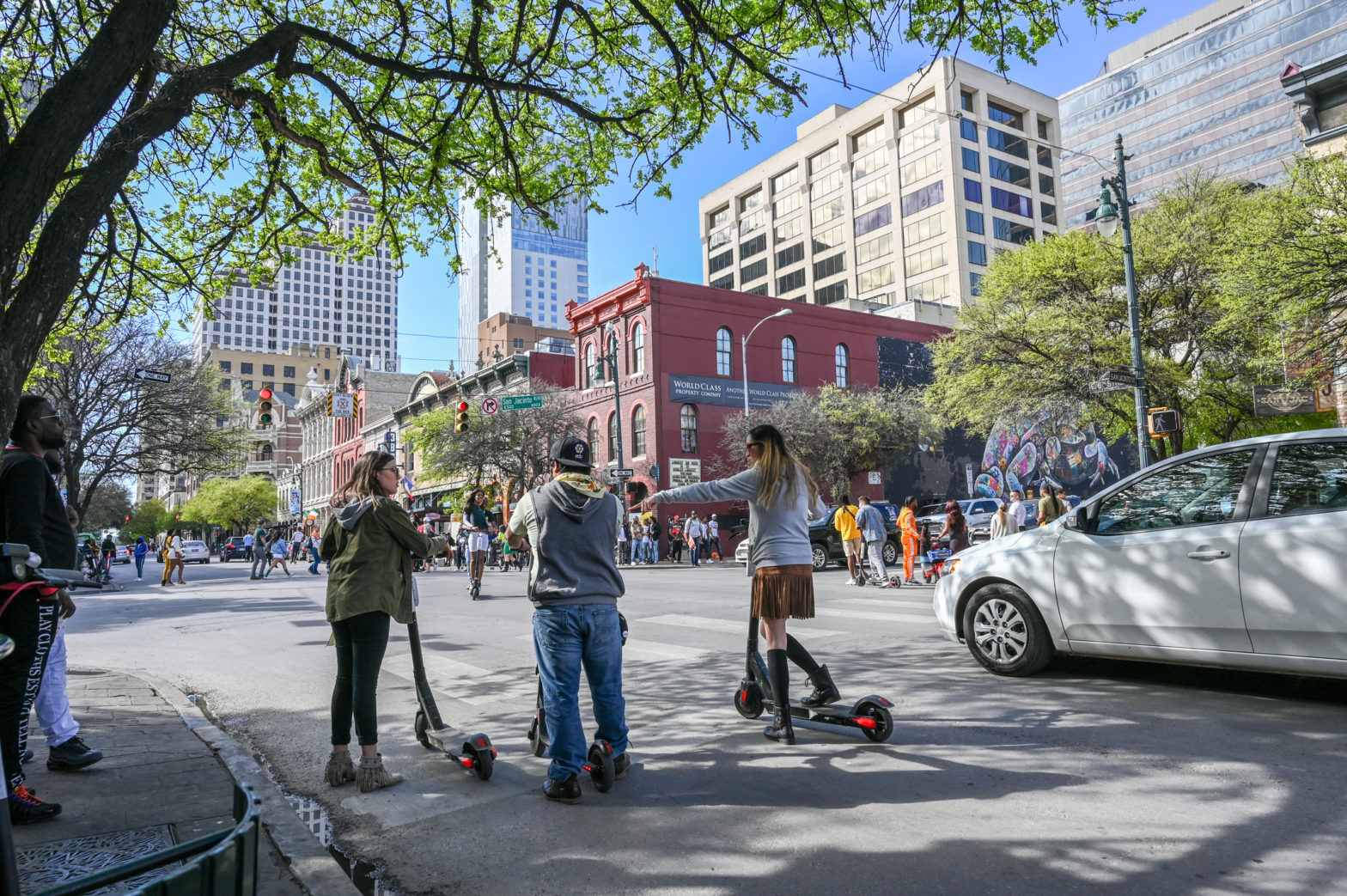
Austin reduces micromobility fleet but improves efficiency
23 April 2025
by William Thorpe
A year after slashing the number of shared scooters and bikes allowed on city streets, Austin officials say the leaner system is more efficient and responsive.
At a city Mobility Committee meeting, Michael Kimbro, Program Manager for Shared Mobility Services, City of Austin, presented data showing that even with thousands fewer devices on the streets, the city maintained daily ridership levels while boosting performance.
Between April 2024 and March 2025, the Texan capital cut its micromobility fleet by nearly 30 percent–from 7,395 to 5,229 citywide. In the downtown core, the reduction was even more dramatic, with available devices dropping from 4,086 to 2,280. Yet daily trip volumes remained steady at around 7,159.
Kimbro’s presentation highlighted a notable jump in the number of trips per vehicle per day (TVD), which rose from 1.21 to 1.36 citywide and from 1.1 to 1.79 downtown. These figures suggest the remaining fleet is being used more efficiently than in previous years.
The improvements follow policy changes implemented in April 2024, including citywide fleet caps, restrictions on deployments downtown, and adjustments to customer service tracking. As a result, complaints dropped dramatically–from over 12,000 the previous year to just above 2,000.
Kimbro also outlined the city’s community and stakeholder engagement efforts. Over the past year, the city has consulted with groups such as the Vision Zero Community Board and the Mayor’s Committee for People with Disabilities, hosted an open house, conducted surveys, and held ongoing meetings with vendors.
As The Austin Monitor reported, city staff said public input most strongly supported safety improvements and stricter parking enforcement. The article also noted the city is pressing vendors to provide more consistent and detailed crash data as part of its Vision Zero strategy.
Kimbro’s update also previewed upcoming changes to the Director’s Rules governing micromobility. The revised rules, set for public release on 5 May, will introduce standardised definitions, clearer safety protocols, limits on provider numbers, and a formal performance grading system. Final adoption is expected by 10 July.
Image: Rolf52 / Dreamtime.com









